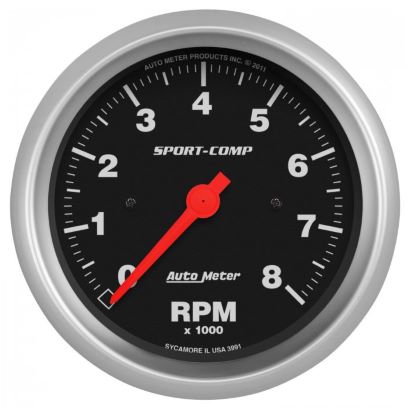Improve Your Driving Experience with a Trustworthy Tachometer
Improve Your Driving Experience with a Trustworthy Tachometer
Blog Article
The Importance of a Tachometer in Checking Engine Speed and Efficiency in Automotive Applications
In the realm of auto engineering, the tachometer stands as an essential instrument in the motorist's arsenal, supplying a straight window right into the internal functions of a lorry's engine. Beyond its feature as a plain gauge of transformations per min (RPM), the tachometer acts as a critical tool for lovers and specialists alike, offering real-time insights right into engine efficiency and health. Comprehending the value of this device exceeds surface-level monitorings, diving into the elaborate partnership in between engine speed, power result, and overall driving experience. As we explore the diverse function of the tachometer in auto applications, a deeper gratitude for its effect on automobile characteristics and efficiency begins to emerge.
Importance of Keeping Track Of Engine RPM
Monitoring engine RPM, or changes per minute, is a crucial facet of vehicle maintenance and efficiency assessment. Engine RPM straight correlates with the rate at which the engine's crankshaft turns, indicating exactly how quickly the engine is running.
Furthermore, keeping an eye on engine RPM is crucial for performance assessment in auto racing and high-performance vehicles. In summary, keeping an eye on engine RPM is not just important for finding issues but likewise for maximizing engine efficiency in numerous automobile applications.

Benefits of Real-Time Data
In vehicle applications, real-time information plays a critical duty in providing instant insights into the performance and condition of the vehicle. By continuously keeping track of different specifications such as engine speed, temperature, fuel consumption, and much more, real-time data offers numerous benefits that contribute to boosted performance and safety and security when driving.
One substantial advantage of real-time data is its capability to sharp motorists and technicians to any abnormalities or problems without delay. This proactive approach makes it possible for fast recognition of prospective problems, permitting prompt treatments to stop further damage or failures. Furthermore, real-time data facilitates efficiency optimization by supplying instant feedback on driving behaviors and engine effectiveness. Chauffeurs can adjust their actions in real-time based on this information to attain much better gas economic climate and prolong the life-span of their automobile.

Moreover, real-time data plays sites an essential function in modern auto diagnostics, enabling professionals to rapidly detect and address breakdowns. This leads to decreased downtime, reduced maintenance expenses, and inevitably, improved overall automobile reliability and durability (tachometer). By using the power of real-time data, automobile stakeholders can make educated choices that positively impact both the efficiency and long life of the lorry
Influence On Gear Shifts
The tachometer plays a critical duty in maximizing equipment changes by supplying real-time engine rate data to the chauffeur. When approaching the redline on the tachometer, it signals the driver to upshift to prevent over-revving the engine and causing prospective damages.
In addition, the tachometer aids in achieving smoother gear transitions, particularly in hand-operated transmissions. By checking engine rate, motorists can carry out gear changes at the optimum RPM array, minimizing jerking motions and minimizing endure the transmission elements. This precision on duty adjustments not only enhances driving convenience however also adds to sustain efficiency.
Enhancing Gas Effectiveness
Given the critical duty the tachometer plays in enhancing gear changes for performance and engine wellness, it directly adds to making the most of gas effectiveness in automobile applications. By giving real-time comments on engine rate, the tachometer helps drivers in keeping the most reliable RPM range for gas economy. When vehicle drivers regularly monitor the tachometer and change their motoring practices as necessary, they can avoid unneeded fuel usage brought on by over-revving or carrying the engine.
In addition, the my sources tachometer aids drivers identify the most fuel-efficient gear to be in at any given moment, preventing the engine from working more difficult than required. In final thought, the tachometer serves as an important tool in improving fuel efficiency by promoting optimal driving habits and identifying locations for renovation in the lorry's efficiency.

Taking Full Advantage Of Engine Long Life
The tachometer's function in monitoring engine speed and efficiency is crucial in making certain the durability of auto engines. Keeping an eye on the tachometer allows motorists to remain within the suggested RPM array for their car, protecting against unnecessary stress on the engine and extending its life-span.

Conclusion
In verdict, the tachometer plays a vital role in checking engine rate and performance in vehicle applications. By providing real-time information on RPM, it permits efficient gear shifts, improved gas effectiveness, and taken full advantage of engine longevity. This tool is essential for preserving optimal engine performance and making certain the general functionality of a lorry.
Report this page